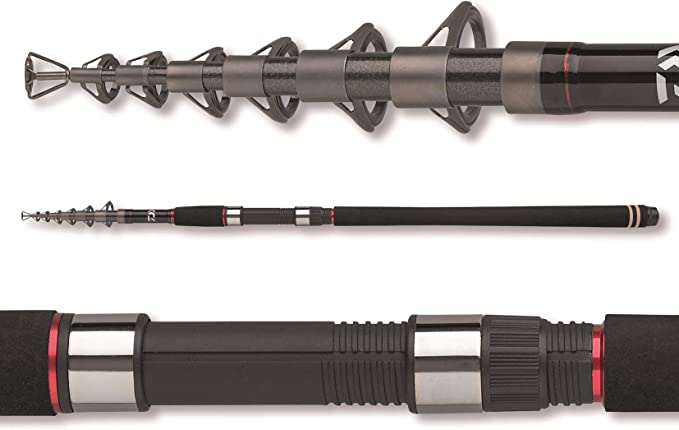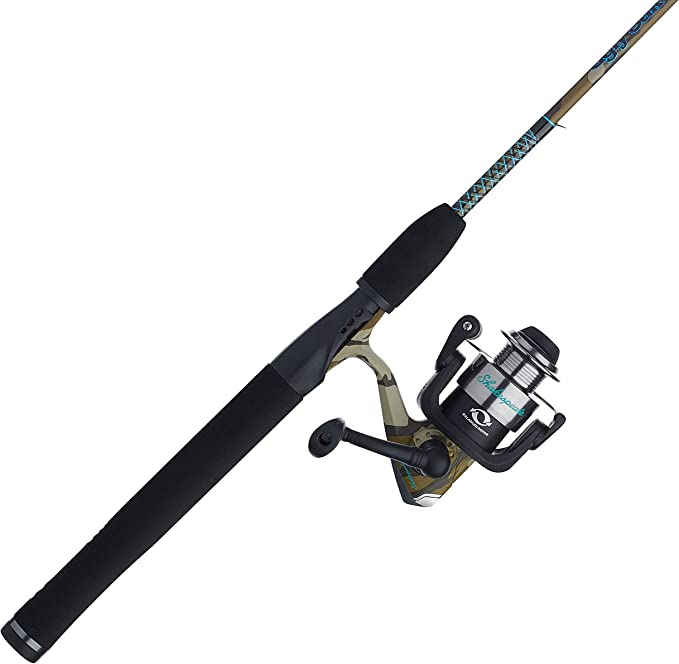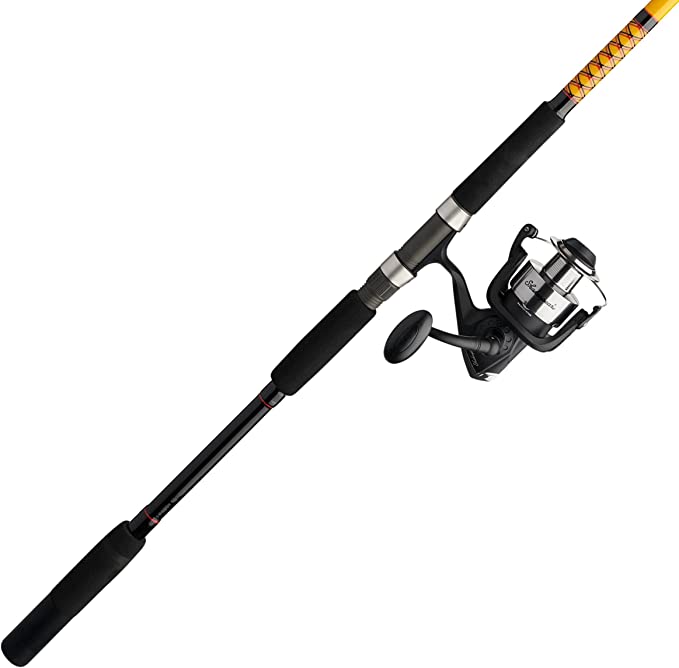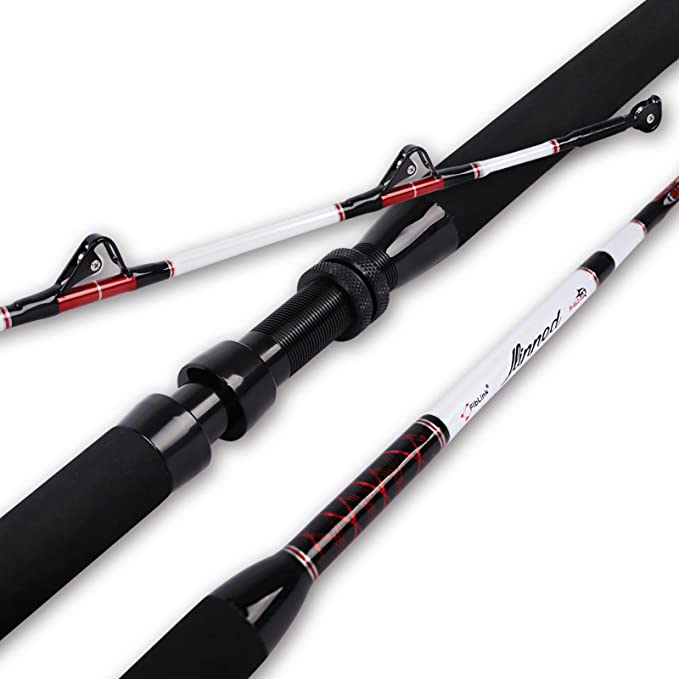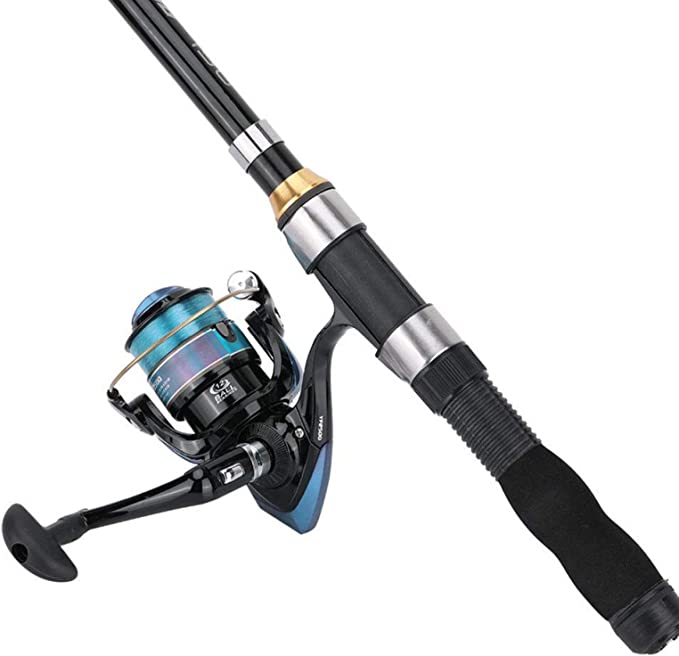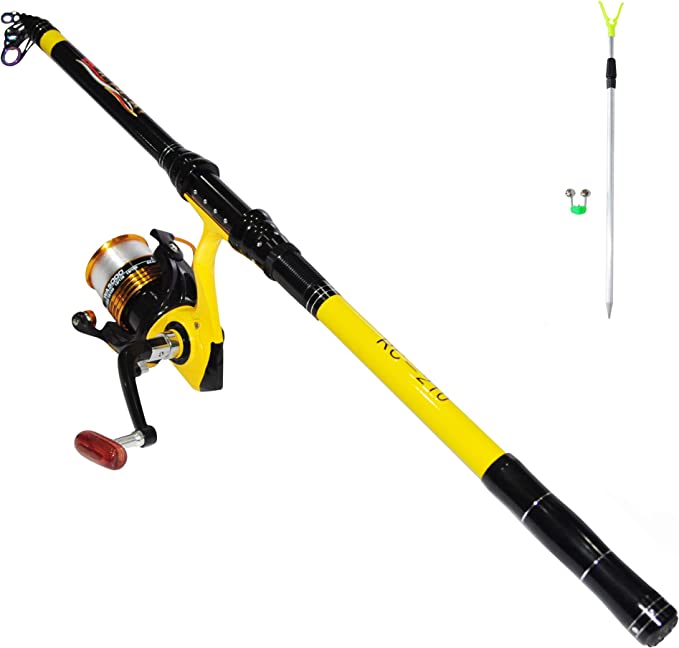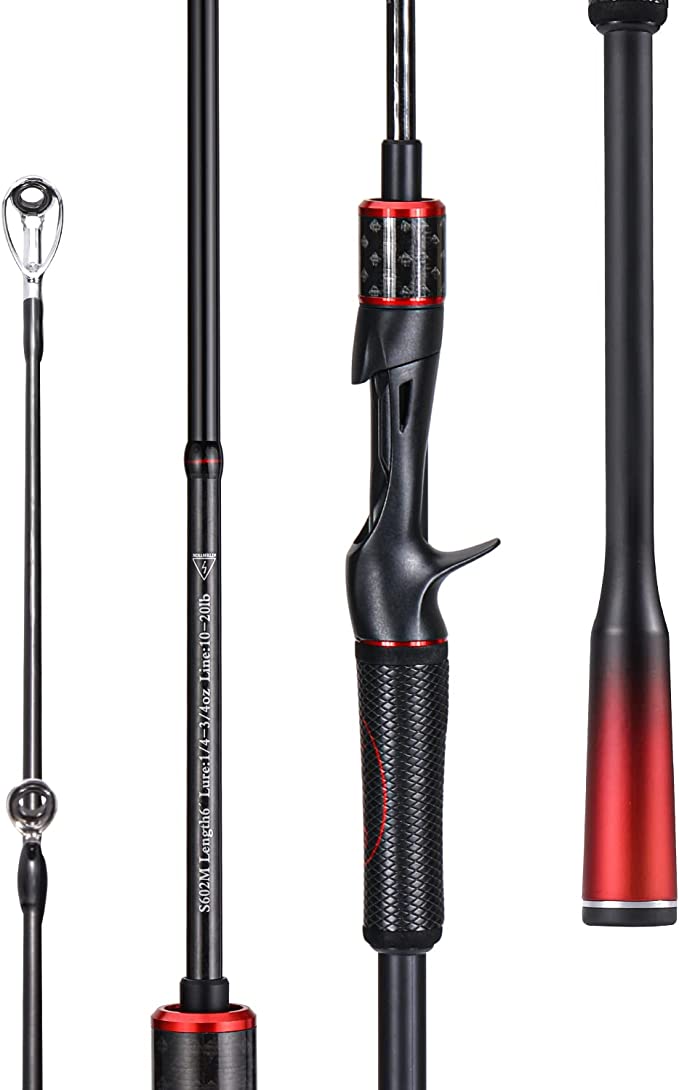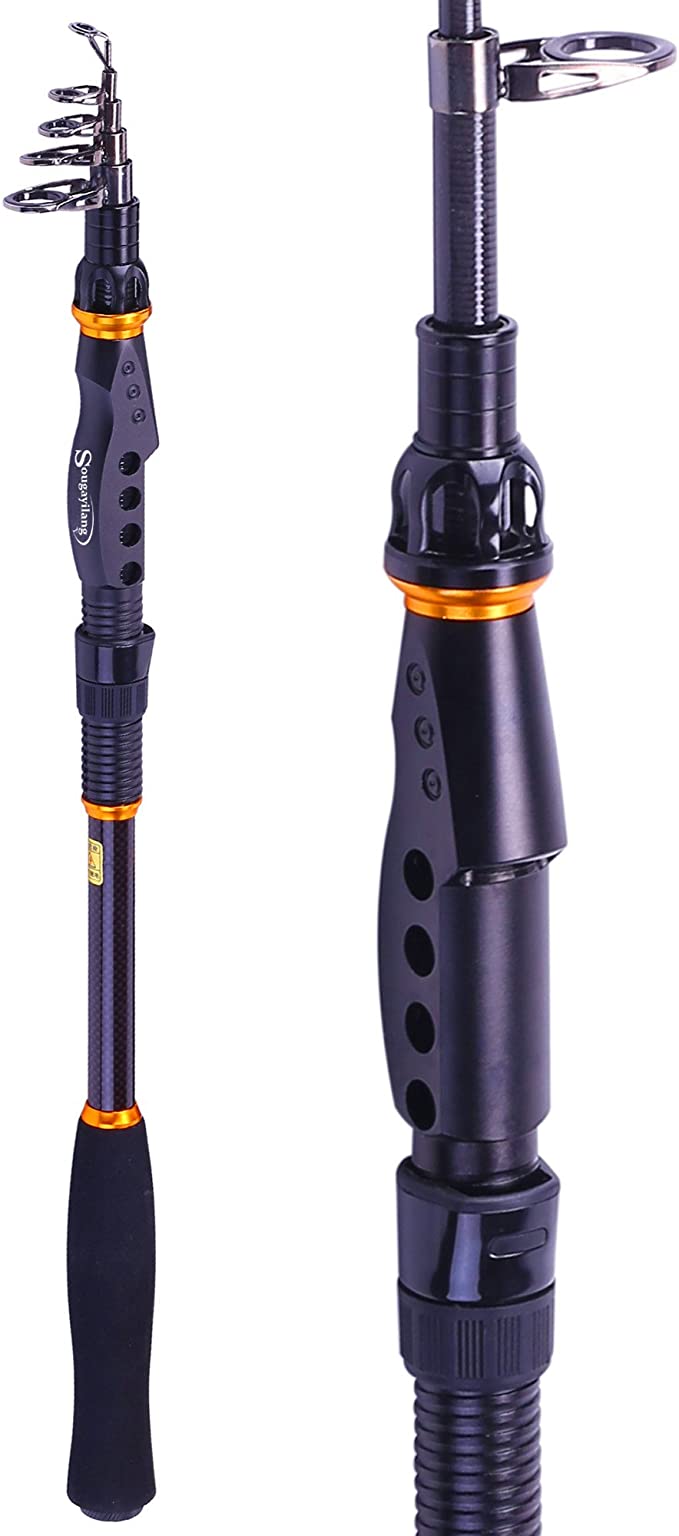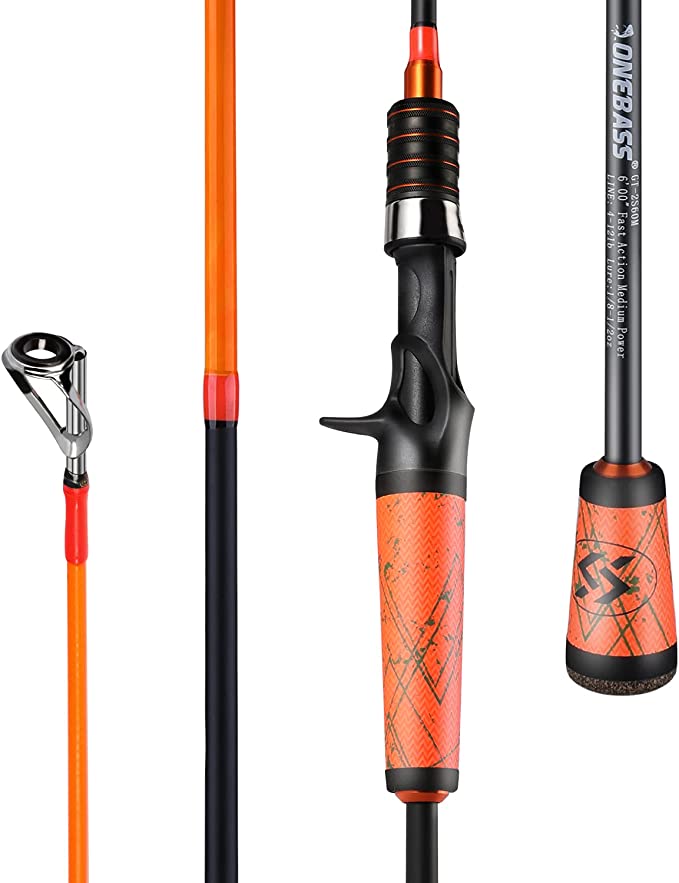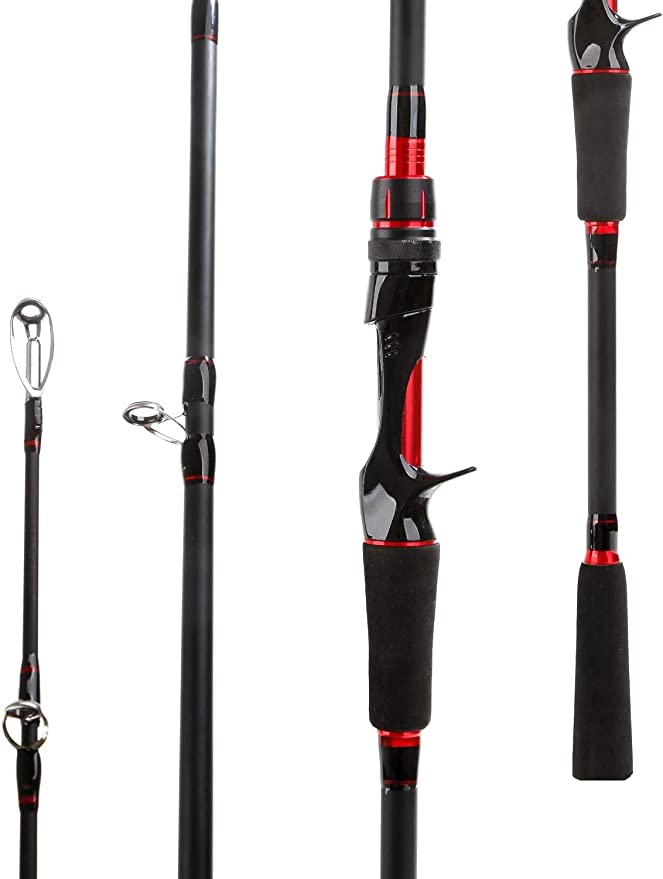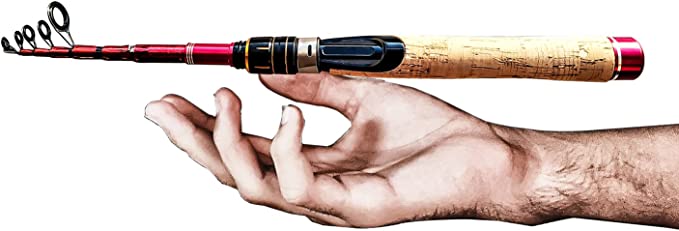Daiwa Tatula Spinning Rods: Lightweight Sensitivity for Bass Fishing
Update on Feb. 24, 2025, 3:55 p.m.
The early morning mist hung low over the lake, the silence broken only by the gentle lapping of water against the hull of my small boat. I could feel the subtle twitch of the line, a telltale sign of a cautious bass investigating my lure. This is where the connection between angler and fish is most intimate, a delicate dance where the rod becomes an extension of your own senses. But what if that extension, that crucial link, isn’t up to the task? That’s the challenge Daiwa addresses with its Tatula series of spinning rods – a blend of cutting-edge materials science and angler-focused design.
A Century of Rods: From Bamboo to Graphite
The pursuit of the perfect fishing rod is a story of continuous innovation. For centuries, anglers relied on the natural flexibility of bamboo, painstakingly crafted into rods that, while effective, lacked the consistency and performance we demand today. The mid-20th century saw the introduction of fiberglass, a revolutionary material that offered greater strength and durability. But the real game-changer arrived with the advent of graphite, also known as carbon fiber.

Carbon Fiber: The Modern Marvel
Carbon fiber is, at its core, incredibly simple. It’s made of thin strands of carbon atoms, tightly bound together in a crystalline structure. But the properties of this seemingly simple material are anything but ordinary. Carbon fiber boasts an exceptional strength-to-weight ratio – it’s significantly stronger than steel, yet remarkably lightweight. This is crucial for fishing rods, where minimizing weight reduces fatigue and enhances sensitivity. The stiffness, or modulus, of carbon fiber is also key. A stiffer rod transmits vibrations more effectively, allowing you to feel even the slightest nibble. It’s like the difference between touching something with a wooden stick versus a metal wire – the metal transmits vibrations much more clearly.
X-45: Weaving Strength and Sensitivity
Daiwa takes carbon fiber technology a step further with its proprietary X-45 construction. Imagine a sheet of paper. If you roll it into a tube along its length, it’s relatively strong. But if you try to twist it, it easily deforms. This is similar to what happens with traditional fishing rod blanks, where carbon fibers are typically wrapped straight around the mandrel (the core around which the rod is built). Under load, these straight fibers can allow the rod blank to twist and ovalize, reducing power and sensitivity.
X-45 tackles this problem head-on. Instead of wrapping the carbon fibers straight, they’re wrapped at a 45-degree angle, both clockwise and counterclockwise. This bias construction creates a cross-hatch pattern that dramatically resists twisting. Think of it like a woven fabric – the interwoven threads provide strength in multiple directions. This resistance to twisting translates directly to several key benefits for the angler:
- Increased Sensitivity: Because the rod blank doesn’t twist as much, vibrations from the line travel more directly to your hand. You feel more of what’s happening at the end of your line.
- Greater Hooking Power: When you set the hook, less energy is lost to rod twist, resulting in a more powerful and efficient hookset.
- Improved Casting Accuracy: A rod that twists less during the cast is more predictable and controllable, leading to more accurate casts.
- Enhanced Hoop Strength: The X-45 construction also provides greater “hoop strength,” meaning the rod can withstand greater pressure when bent, making it more durable when fighting larger fish.
- Braiding-X: Braiding-X is best understood as a reinforcing component within the overall X-45 construction. It typically involves an additional layer of tightly braided carbon fiber, often found in the butt section of the rod. This extra layer provides even greater hoop strength and torsional rigidity, further enhancing the rod’s power and responsiveness, particularly when fighting larger, more powerful fish. It’s not a separate technology, but rather an enhancement to the core X-45 design.
FazLite: The Smooth Operator
The guides on a fishing rod might seem like a minor detail, but they play a critical role in casting performance. The line passes through these guides at high speed during the cast, and any friction can significantly reduce distance and accuracy. Daiwa addresses this with Fuji FazLite guides.
FazLite is a proprietary ceramic material developed by Fuji, a leading manufacturer of fishing rod components. It’s an improvement over previous generations of ceramic guides, offering an exceptional balance of hardness, smoothness, and durability. The key is its incredibly smooth surface. This minimizes friction as the line passes through the guides, allowing for longer and smoother casts. Less friction also means less wear and tear on your fishing line, extending its lifespan. The hardness of FazLite also makes it highly resistant to grooving, which can occur with softer guide materials and further increase friction over time.
Action and Power: Understanding the Bend
Two crucial characteristics define a fishing rod’s performance: action and power.
-
Action refers to where the rod bends along its length. A fast-action rod bends primarily at the tip. This provides greater sensitivity and faster hooksets, ideal for techniques like finesse fishing where you need to feel subtle bites. A moderate-action rod bends further down the blank, providing a more parabolic curve. This is better for casting lighter lures and absorbing the shock of fighting larger fish. A slow-action rod bends along almost its entire length, offering maximum shock absorption but sacrificing sensitivity.
-
Power refers to the rod’s strength – its ability to resist bending. Power ratings typically range from ultralight to extra-heavy. A lighter power rod is suitable for smaller fish and lighter lures, while a heavier power rod is needed for larger fish and heavier lures.
The Daiwa Tatula series offers a range of actions and powers, allowing anglers to choose the perfect rod for their specific fishing style and target species. A 6‘10” medium-fast action Tatula, for instance, is a versatile choice for bass fishing, providing a good balance of sensitivity and power for techniques like drop-shotting and worm fishing. The 7‘6” medium-light medium-fast is suitable for longer casting with slightly heavier line.
Tatula in Action: Connecting Angler and Fish
The true test of any fishing rod is how it performs on the water. The combination of X-45 construction, FazLite guides, and a comfortable cork handle makes the Tatula a joy to fish with. The lightweight design reduces fatigue during long days of casting, while the enhanced sensitivity allows you to feel even the most subtle strikes. The rod’s power and responsiveness provide the confidence you need to land even the most challenging fish.It allows to set the hook and control the fish.
Beyond the Tatula: The Future of Rods
The evolution of fishing rod technology is far from over. Researchers are constantly exploring new materials and manufacturing techniques to create even lighter, stronger, and more sensitive rods. We might see rods with integrated sensors that provide real-time feedback on line tension and lure depth. Nanomaterials, with their incredible strength and lightweight properties, could revolutionize rod design.
Conclusion: A Symphony of Science and Skill
The Daiwa Tatula spinning rod is more than just a piece of fishing equipment. It’s a testament to the power of materials science and engineering to enhance our connection with the natural world. By understanding the science behind the rod’s design – the X-45 construction, the FazLite guides, the carefully chosen action and power – we can appreciate not only its performance but also the ingenuity and innovation that make it possible. It’s a reminder that even in the seemingly simple act of fishing, there’s a world of science waiting to be explored.

